Technical swimming training for triathlon
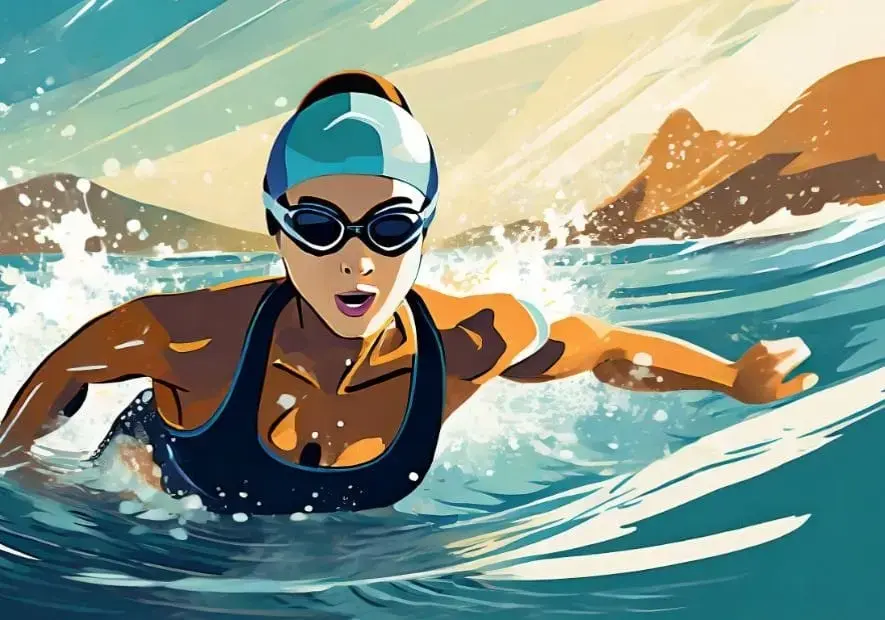
- 1. Exploring the Significance of Technical Swimming Training in Triathlon
- 2. Establishing Swimming Fundamentals for Triathlon Athletes
- - Mastering breathing techniques for endurance swimming
- - Efficient body positioning and its effects on speed and stamina
- - Importance of a powerful kick in triathlon swimming
- 3. Advanced Techniques in Swimming for Triathlon Training
- - Incorporating flip turns for triathlon swimming
- - Optimizing stroke techniques for long-distance swimming
- - Bonus training drill: Underwater dolphin kicks
- 4. Essential Tips for Enhancing Swimming Endurance in Triathlon Training
- - Value of long, slow, distance (LSD) swimming
- - Techniques for interval training in the swimming leg
- - Role of strength training in improving swimming endurance
- 5. Planning a Technical Swimming Training Schedule in Triathlon
- - Creating a balanced swimming training plan
- - Importance of rest and recovery in a swimming training plan
- 6. Transitioning from Swimming to Other Triathlon Disciplines
- - Swimming-to-bike transition (T1) tips
- - Maintaining energy and momentum from swimming leg to subsequent stages
- 7. Conquering Common Challenges in Swimming for Triathlons
- - Addressing fears of open water swimming
- - Combating weather and environmental challenges in swimming
- 8. Real-life Success Stories of Triathlon Swimming Champions
1. Exploring the Significance of Technical Swimming Training in Triathlon
In the adrenaline-fueled world of triathlon, the importance of technical swimming training often takes a back seat to running and cycling. However, mastering the art of swimming can garner significant advantages, making it an essential component of any successful triathlon training program. By enhancing body coordination, balance, and aquatic endurance, technical swimming significantly boosts an athlete's overall performance. Additionally, considering the swim is the first leg of a triathlon, a strong start can set the tone for the rest of the race. Undoubtedly, a firm foundation in technical swimming can be a triathlete's secret weapon, carving the pathway to cross the finish line faster.
- Importance of the swimming leg in a triathlon
In the thrilling world of triathlon, the swimming leg often doesn't get the attention it truly deserves. Yet, don't be fooled – this initial stage holds major significance and can set the tone for the entire event. You may ask why? It's because the open water swim challenges your body in unique ways, different from the bike and run stages, as well as your mental strength as you navigate the unpredictable waters alongside other competitors. A well-executed swim leg doesn't just save precious energy for the bike and run, but also delivers a much-needed confidence boost. It's like setting a solid foundation for a towering building – skimp on this stage, and the rest could crumble. Remember, a good swim isn’t just about speed; it's about efficiency, stamina, and strategy. Understanding its importance is the first step in mastering your triathlon performance. So, is it time to rethink your training approach and give swimming the emphasis it deserves? After all, in triathlon, every stroke really does count! Train hard, compete harder, and let every lap in the pool propel you towards becoming a more impactful triathlete. Master the swim, and you've mastered a significant chunk of your triathlon journey!
- Benefits of proper technical training in swimming
Proper technical training in swimming is an indispensable asset for any triathlon athlete. Beyond physical conditioning, it offers strategic advantages that can drastically improve your performance. Ever wondered why some swimmers glide through the water effortlessly? That's the power of good technique! It's not just about speed, it's about efficiency, conserving energy, and training your body to move in ways that reduce drag and resistance against water. Technique-focused training helps you master breathing rhythms vital for endurance, maximize your stroke for propulsion, and improve your body positioning to reduce water resistance. It's like the difference between driving a well-oiled, finely-tuned race car as opposed to an old, rusted-out clunker. Sure, both will get you to the finish line, but one will do it much faster and easier! It's all about working smarter, not harder. Isn't it fascinating how tweaking simple things like hand entry, body roll, or kick technique can shave precious seconds off your time? And with each second saved during the swim, you're saving energy for the bike and run legs. Don’t neglect the power of technical swimming training—embrace it, perfect it, and watch your overall triathlon performance surge!
2. Establishing Swimming Fundamentals for Triathlon Athletes
Mastering the fundamentals of swimming is absolutely pivotal for triathlon athletes. It all begins with breathing techniques. Proper breathing not only bolsters endurance but also enhances your swimming rhythm. Remember, consistency is key; learning how to steadily exhale underwater and inhale above it matters tremendously. Alongside this, efficient body positioning substantially influences both speed and stamina. Maintaining a streamlined position reduces drag, allowing you to cut through the water effortlessly. Lastly, underestimate not the power of a strong kick. It's not all about the arms; a solid kick provides valuable propulsion. Pepper your training with these basics, and you'll soon notice improvements in your swimming segment of a triathlon.
- Mastering breathing techniques for endurance swimming
Mastering breathing techniques is crucial for endurance swimming in a triathlon. It's not just about churning your arms and legs; it's about getting the right amount of oxygen to power those movements. Imagine running a marathon while holding your breath! Sounds impossible, right? The same principle applies to swimming. Proper breathing techniques can significantly boost your stamina and potentially shave valuable minutes off your race time. Whether you're a beginner or a seasoned triathlete, you need to nail down the foundations of correct breathing. It's not as simple as inhaling or exhaling whenever you feel like it. Knowing when to breathe, how often to breathe, and which side to breathe on can mean the difference between finishing strong and gasping for air midway. Tip: Training your body to breathe bilaterally (on both sides) can help maintain balance and streamline your stroke. Remember, the key is to make breathing a seamless part of your stroke cycle. It shouldn't interrupt your rhythm or your flow; it must complement it. So, how much are you willing to work on this pivotal technique? Master the art of breathing, and you'll swim not just faster, but also longer. Imported air never tasted better, right?
- Efficient body positioning and its effects on speed and stamina
Efficiency is integral in all aspects of a triathlon, and none more so than in swimming. The impact of efficient body positioning on both speed and stamina can't be overstated. See, every wasted movement in the water is a tick off your time and a drain on your energy. A streamlined body reduces drag, the constant foe of the swimmer, letting you glide through the water more effortlessly, like a sleek marine creature, and significantly improves your speed. But it's not just about speed. Energy conservation plays a vital role in a triathlon, where stamina is just as important as speed. An optimal body position helps you do just that - swim efficiently, expending minimum energy, so you don't gas out when it's time to hit the pedals or lace up the running shoes. It's a delicate balance that must be finely tuned through persistent training. But master it, and you'll reap the rewards during your big race. So, how streamlined is your body position?
- Importance of a powerful kick in triathlon swimming
A triathlon is a test of endurance, speed, and sheer willpower. But, have you ever considered the importance of a powerful kick in triathlon swimming? Your kick propels you through the water with force and speed, contributing significantly to your overall performance. However, it’s not just about kicking harder or faster. The key lies in mastering the 'flutter kick' - a rapid, alternating up-and-down kick utilizing your hips, not just your knees. This technique helps triathletes maximize propulsion while conserving energy for the bike and run stages. It’s like driving a high-performance car. Can you imagine trying to navigate sharp turns without a firm grip on the steering wheel? Similarly, your powerful kick helps maintain body position and streamline in the water, preventing drag and encouraging a fluid, efficient swim. Here's a rhetorical question: Are you ready to kick it up a notch in your triathlon game? Start by investing time and effort in enhancing your kicking technique. Remember, every second shaved off in the swim adds a cushion for the grueling bike and run to come. So whether you're knee-deep in training or just starting out, don't underestimate the power of a potent kick. It's your secret weapon to making waves in your next triathlon.
3. Advanced Techniques in Swimming for Triathlon Training
Diving into advanced techniques is pivotal to have an edge in your triathlon swimming training. Flip turns, often overlooked, can be a game-changer. They eliminate any unnecessary pause between laps, keeping your momentum and speed intact. Meanwhile, optimizing your stroke technique for long-distance swimming also merits attention. For enduring the miles, a well-tuned stroke not only conserves energy but also cuts through water with greater finesse. A hidden ace could be the underwater dolphin kick, which with practice can massively enhance your swimming speed. Incorporating these advanced techniques into your regimen can catapult your performance to grand new heights. Are you ready to dive in?
- Incorporating flip turns for triathlon swimming
In the challenging world of triathlon swimming, **incorporating flip turns** can give you a friendly edge. Understanding and mastering this technique can be a game-changer, shaving precious seconds off your swimming leg. While the open waters of a triathlon don't offer walls for flip turns, the technique's intricacies make you aware of your movement in water, offering optimal body control. Do you know that flip turns develop a sense of rhythm in your swimming motion? Yes, indeed! They help you maintain a continuous swimming rhythm instead of implementing a stop-start motion, often caused by conventional turns. It eventually translates to a faster and more efficient swimming style, coupled with increased stamina and speed. Still hesitant about flip turns? Let's break it down. In essence, a flip turn involves tucking your chin, executing a forward somersault, and then pushing off the wall with your feet. Sounds complex? Remember, it's all about practice, just like your consistent kicks or master-strokes. But, why should you incorporate flip turns in your pool training sessions? Simply put, practicing flip turns can enhance your overall swimming skills. It gives you the opportunity to swim larger laps without breaks, enhancing your endurance, breath control, and speed. So, are you ready to flip your swimming routine for the better? Just give it a go!
- Optimizing stroke techniques for long-distance swimming
When it comes to triathlon swimming, mastering the fundamental technique of efficient strokes is paramount for improved long-distance swimming performance. Optimizing your stroke technique goes beyond simply moving your limbs in the water - it’s an intricate process that involves a blend of form, rhythm, and optimal energy utilization. An effective stroke technique starts with a well-executed catch – the pulling motion underwater. It's critical to ensure the "high elbow" technique is employed to create maximum propulsion with minimum energy expenditure. Next, we've got the glide. Maximizing your glide from each stroke could greatly increase your stroke efficiency, leading to less fatigue over time, a crucial aspect in long-distance swimming. Have you ever considered that your body rotation plays a significant part in your swimming technique? By ensuring your body rotates with each stroke, you inevitably engage your core more, reducing the strain on your arm and shoulder muscles and optimizing your overall energy expenditure. Let's also not forget about your kick! A balanced, powerful kick is not only pivotal for maintaining proper body position in the water but also contributes to the overall power of your stroke. So there you have it, triathletes! In the pursuit of optimizing your long-distance swimming, a focus on refining your stroke technique could revolutionize your performance in the water. Don't just train harder, train smarter too!
- Bonus training drill: Underwater dolphin kicks
The next step in your journey to perfecting your triathlon swimming game is incorporating an advanced technique: the underwater dolphin kicks. This bonus drill is often overlooked but holds key significance. It's designed to provide an important edge, offering you the ability to conserve energy while maximizing speed, especially once you launch from the wall after each turn. The underwater dolphin kick technique, also referred to as the "fifth stroke," harnesses the power of your whole body, utilizing a synchronized whirlpool-like motion that enables you to slice through the water like a torpedo. Although this method takes time and careful practice to perfect, mastering it can considerably improve your speed and efficiency in the water. It's essential to pay attention to your form - you want to generate force from your hips, keeping your knees and ankles loose, while maintaining core tightness to avoid energy-draining snakiness. Remember, mastering underwater dolphin kicks takes time and perseverance. So, don't be discouraged if you don't get it right immediately. Keep practicing. Remember, the key to triathlon success lies not just in speed, but also in endurance and efficiency, and this vital drill can help you achieve just that!
4. Essential Tips for Enhancing Swimming Endurance in Triathlon Training
Enhancing swimming endurance is a critical aspect of triathlon training. One significant method is long, slow, distance (LSD) swimming, perfect for building cardiovascular stamina and enhancing your performance. Interval training proves equally vital, allowing athletes to develop speed and recover simultaneously. It involves alternating between high-intensity and low-intensity swimming, boosting both your aerobic and anaerobic systems. Additionally, strength training should not be overlooked in your regime. It not only promotes swimming efficiency but also aids in injury prevention. Remember, your plan's success hinges on consistent practice, smart techniques, and a steadfast determination to excel in the swimming leg of triathlon training.
- Value of long, slow, distance (LSD) swimming
The Value of Long, Slow, Distance (LSD) Swimming in triathlon training cannot be underestimated. This form of training, wherein you swim at a comfortable, steady pace over a longer distance, is pivotal to building your aerobic base. It simulates the actual race conditions, helping you prepare physically and mentally for the long, intensive swim during a triathlon. LSD swimming can increase your swim volume without pushing your body to its limit, thus minimizing the risk of injury. It's not about speed, it's about efficiency and endurance. It trains your body to swim efficiently and conserve energy, two things key to a successful triathlon swim. Furthermore, it enhances your cardiovascular endurance. It allows your heart to pump a large amount of blood per beat, feeding your muscles with more oxygen and thereby reducing the production of lactic acid. A steady, slow, and long-distance swimming session can help you become more confident and comfortable in the water. Besides, it serves as a perfect opportunity to perfect your swimming techniques and breathing patterns. So get ready, hit the pool, and allow LSD swimming to transform your triathlon swimming performance like never before.
- Techniques for interval training in the swimming leg
In the world of **triathlon swimming**, one of the most effective techniques to enhance your speed, power, and stamina is mastering **interval training**. What makes this training crucial, you ask? Firstly, it facilitates an increase in aerobic capacity and endurance, thereby enabling you to perform well, even in the exhausting last miles. Interval training involves alternating between periods of **intense effort and active recovery**. For instance, you might swim a few laps at full speed, followed by a moment of slower, relaxed swimming, and repeat. This repeated 'stress and recover' pattern trains your body to recover quickly from bursts of speed, which is essential in a triathlon race's dynamic environment. Additionally, it teaches your muscles to effectively remove lactic acid, a byproduct of vigorous exercise that often results in fatigue. For optimal results, it is essential to **personalize your interval training strategy**. Everybody's body and capabilities are different, so what works wonders for another might barely aid you. Monitor your heartbeat during workouts, gradually increasing intensity and duration to keep challenging your body and avoid plateaus. Remember, consistency and patience are key! To iterate, **proper interval training** is an essential tool in every aspiring triathlon swimmer's kit. It equips you to not just swim faster, but smarter, giving an edge over your competitors and helping you triumph over one of triathlon's toughest segments.
- Role of strength training in improving swimming endurance
While it's tempting to overlook the role of strength training in improving swimming endurance, it's vital for every triathlon athlete to understand its significance. Strength training, often considered secondary to the technical aspects of swimming, is the unsung hero of a successful swimming regimen. It’s all about working those muscles that you may not use frequently in everyday life but are fundamental to swimming. Building muscular endurance through bodyweight exercises, gym workouts or resistance band drills goes a long way in enhancing your swim speed and stamina. Picture your body as an engine, the bigger and more efficient the engine, the more power it can generate. But don't just focus on arm and shoulder strength; core stability is equally crucial. A solid core leads to more efficient strokes and less energy expenditure, allowing you to go the distance. Moreover, a consistent strength training routine significantly reduces your risk of injury, ensuring you're always ready to jump into the pool and swim those laps. So, if you’re aiming for a triumphant finish at your triathlon’s swimming leg, remember, strength training isn’t a mere add-on, it’s an essential part of your training plan. Now, are you ready to dive into your next workout with renewed vigor?
5. Planning a Technical Swimming Training Schedule in Triathlon
In your quest for triathlon success, planning a balanced and effective technical swimming training schedule is essential. As we all know, triathlons are not merely about endurance - they're also heavily reliant on technique, efficiency, and strategic use of energy. This is why your swimming training plan must incorporate elements that enhance your technical skills, such as speed drills, form correction exercises, and of course, recovery periods. Remember, rest is just as important as training! It allows your body to recover, adapt, and come back stronger. So, when you map out your training sessions for the week, ensure you intersperse intense days with lighter ones for balance. Finally, don't forget to keep things interesting with varied routines - mix up your drills, venues, and intensity levels. After all, monotony is the enemy of progress!
- Creating a balanced swimming training plan
Creating a balanced swimming training plan is not just a handy strategy, it's an imperative aspect of your triathlon journey. How so? Let’s dive in. A structured program paves the road to achieving optimal performance, endurance, and skill. It ensures you progressively enhance your prowess without overtraining or burning out, two snags that can damage your triathlon dreams exponentially. When tailoring your plan, keep in mind the need for variety. Strength training, high-intensity interval workouts, and long, slow-distance swims all lead to a well-rounded swimmer. Rotate between these workouts to unlock their combined benefits while keeping monotony at bay. Remember, training for a triathlon is a marathon, not a sprint. Pace yourself wisely by incorporating days for rest and active recovery. This is quintessential not just physical revitalization, but also for mental recharge. Even within your swimming routines, moderate your intensity. Not every session should resemble a championship race; rather, include relatively gentle swims that foster technique refinement and consistent endurance without red-lining your heart rate. Balance and rhythm are your steadfast companions in this journey. They are your keys to unlock that successful triathlon swim leg you desire. Amalgamate them in your plan, and watch your swimming potential unfurl.
- Importance of rest and recovery in a swimming training plan
Understanding the importance of rest and recovery in your swimming training plan is as vital as grasping the technicalities of the swim itself. Savvy triathletes realize that rest days are, in fact, part of their training. It's during those periods of downtime that your body is working silently but earnestly to repair muscle tissues, ultimately enhancing your performance in the water. Incorporating schedule gaps permits your body to replenish energy stores and allows muscle tissue to regenerate successfully. Overloading on rigorous training without sufficient recovery might ultimately lead to 'overtraining syndrome', characterized by diminished performance, tiredness, and a greater risk for injuries. A well-rested triathlete is swifter, more efficient, and less prone to injuries. Planning rest and recovery into your training schedule isn't simply about taking a day off from swimming. It can include active recovery like light stretching or yoga, nutritious eating, and hydrating properly. Remember, training breaches physical limits, but recovery is where actual growth happens; one can't exist without the other. So next time you're formulating your triathlon training schedule, prioritize those rest days. Because, ultimately, the road to triathlon success isn't marked by who trained the hardest but who effectively balanced their exertion with proper rest and recovery. The significance of rest and recovery might just be your secret weapon in triathlon swimming training plan. After all, it's just as crucial as nailing that perfect swim technique!
6. Transitioning from Swimming to Other Triathlon Disciplines
Transitioning from swimming to the subsequent stages of a triathlon is a pivotal moment in the race. It's not just about completing the swim; it's about conserving energy and maintaining momentum as you shift gears to the bike ride. A smooth transition requires focus, technique, and practice. Here's a tip: as you approach the final portion of your swim, begin to adjust your body position and kick harder to increase blood flow in your legs. Remember, T1 isn't a break, but rather an opportunity to shave off valuable seconds. It's your chance to refuel and hydrate as you prepare for the next challenge.
- Swimming-to-bike transition (T1) tips
Swimming-to-bike transition (T1) is a critical phase in a triathlon that can greatly impact your overall performance. Mastering this transition begins with an efficient exit from the water. Practicing a fast and smooth transition from horizontal swimming to vertical walking or running can save precious time. Equally important is strategically placing your gear in the transition area. Organizing your bike gear - helmet, shoes, sunglasses - in the order you'll use them can simplify the process and reduce stress. Consider the comfort factor as well, a towel, for instance, to dry off and wipe away the sand before moving onto cycling. However, the real game changer is your physical transition, particularly your pace. Heading straight from swimming to cycling is a major gear-shift for your body. A good tip is to elevate your heart rate towards the end of your swim, preparing your body for the more intense cycling phase. Remember, the idea isn't to drain your energy, but to get your body into the right gear to switch disciplines. Practice is key to mastering the T1 transition. Simulate race day conditions and focus on forming a smooth, efficient routine that works for you. A successful transition can provide a notable edge in your triathlon performance. And always keep in mind - triathlon isn't merely about swimming, biking, and running, it's also about the transitions.
- Maintaining energy and momentum from swimming leg to subsequent stages
Maintaining energy and momentum from the swimming leg to subsequent stages of a triathlon can often feel like a daunting task, especially for novice triathletes. This phase, commonly known as T1, is where athletes transition from water to land, a shift that visualizes a radical switch in muscle group utilization. Here, your body must readjust quickly not just physically, but also physiologically. It's an interplay of cardiovascular efficiency, muscle endurance, and mental fortitude. A big mistake many athletes make is to push too hard during the swim. This can lead to unnecessary fatigue for the bike and run stages. That's why it's essential to practice a controlled, efficient swim technique that conserves energy as well as ensures effectiveness. An endurance-based swim training can set the foundation for stamina, thus preserving your vigour for the subsequent disciplines. Visualizing and rehearsing your transitions can significantly enhance your performance and boost your confidence. Prepare yourself mentally to switch from horizontal swimming to upright cycling. Incorporate brick workouts in your training plan, which involve back-to-back sessions of different disciplines. For instance, a swim workout followed immediately by a bike ride. Remember, every triathlon stage is interconnected; understanding this connection is the key to maintaining energy and momentum. It's about complete endurance, not just swimming endurance.
7. Conquering Common Challenges in Swimming for Triathlons
Conquering the common challenges in swimming for triathlons can sometimes seem like a herculean task. But hey, guess what? They're conquerable. Extreme weather conditions, bone-chilling waters, or the sheer fear of open-water swimming can often intimidate even the most seasoned swimmers. How do we conquer them, you may ask? It starts with embracing these hurdles as part of the adventure and training ourselves to adapt. Don't let the unpredictability of open-water swimming unsettle you. Instead, use it as an opportunity to build mental stamina and resilience. Remember, facing challenges head-on will eventually turn into your most triumphant victories.
- Addressing fears of open water swimming
One of the most common mental hurdles that triathlon participants face is the fear of open water swimming. This stems from various reasons; darkness below, unseen aquatic life, and the vast expanse of water stretching to the horizon. If you're a novice swimmer or someone with limited experience in open waters, this tends to amplify your apprehensions. However, it’s important to remember that overcoming this fear is a crucial part of your triathlon journey. Staying calm is the key, and it begins with familiarizing yourself with your environment. Try practicing in similar conditions before the race day. Feel the chill of the water, observe the undercurrents, and get comfortable with the idea of being far from the shore. Also, learning about the course details, potential hazards, and studying the layout of the navigation buoy helps. In triathlon, you have to be your own hero, and to conquer any fear, you need to face it head-on. So, the next time you stand on the verge of an open water swim, remember to breathe, focus, and plunge into the challenge. It's not easy, but then again, triumph over fright always holds a sweet taste. Every triumphant swim is not just about the physical achievement; it’s also a victory over your fears. So forge ahead, and let your courage ride the waves!
- Combating weather and environmental challenges in swimming
Swimming in a triathlon can be an arduous task, especially when you throw in various weather and environmental challenges. Whether it's cold water temperatures, strong sea currents or murky lake water, there's a lot that a triathlete must prepare for and tackle. As a triathlete, your ability to adjust and react to these natural elements is as crucial as your technical swimming skills. Take for instance the cold water scenario - it can zap your energy and slow you down substantially. The best way to combat this is by acclimating your body to colder temperatures over a period of time. Regular cold showers, ice baths, and practice swims in cold water can greatly help in this regard. Next, let's consider strong sea currents, which can be intimidating even to the most experienced swimmers. Apart from predicting currents and using them to your advantage, a great tip is to maintain your composure and not fight against the current. Instead, adapt your swimming strategy to veer off-course slightly in the direction of the current, saving both time and energy. Murky water can often be disorienting and can cause anxiety. A good idea here is to focus on your strokes, rhythm, and breathing rather than worrying about the visibility. Remember, everyone is in the same boat, and your ability to mentally adjust can give you an absolute advantage over your competitors. Each of these strategies underscores the importance of being well-prepared and resilient when facing the unexpected challenges that nature often throws our way during a triathlon.
8. Real-life Success Stories of Triathlon Swimming Champions
Diving into the world of triathlon swimming champions, your inspiration pool deepens. Meet Gina, a veteran athlete with an impressive record of victories, who swears by the power of her technical swimming training. Despite initially fearing open water, she conquered her phobia, driven by the relentless urge to triumph. Similarly, consider Ricardo, a sun-dodger turned triathlon champion, who defied inclement weather and low visibility to excel in his races. These are not merely tales of victory; they also embody proof of the endless potential buried within our perseverance. So, what's your excuse to not plunge headfirst into your triathlon training?
- Interviews with champion triathlon swimmers
For our readers to truly grasp the ingenuity and dedication involved in becoming a champion triathlon swimmer, we've had the honor to engage with some of the best in the sport. These discussions have allowed profound insights into the exceptional world of triathlon swimming. Across the board, our interviewees reiterated the significance of one principle: relentless training. Indeed, every champion shared tales of grueling practice sessions, pushing their bodies to the limit, and beyond. Moreover, it was fascinating to understand the underlying link between the physical and psychological aspects of triathlon swimming, as shared by our champions. They spoke of the mental fortitude needed to overcome intense fatigue, as well as the importance of remaining mentally agile to adapt to unpredictable open-water conditions. The balance between physical prowess and mental tenacity emerged as the winning combination in their journeys to triumph. Interestingly, not all focused solely on their individual techniques. Some champions emphasized the critical role their support teams and coaches played in their success. Thus, we encourage aspiring triathletes to seek out mentors who can guide them in their journey. With the right attitude, proper training, and invaluable support, becoming a triumphant triathlon swimmer is not only achievable but also a constantly evolving journey that will test and redefine personal limits. Stay tuned for more insights from our champion interviews!
- Inspirational tales of overcoming swimming obstacles in triathlons
The world of triathlons is fraught with inspiring tales of athletes overcoming numerous swimming obstacles, each story endowed with its unique brand of resilience, determination and steely resolve. For instance, we have the narrative of unstoppable triathlete James Lawrence, fondly referred to as the Iron Cowboy. Pitted against the grueling demands of open water swimming, Lawrence had to muster all his strength and courage to dominate the watery expanse, not once but in 50 consecutive Ironman races. From battling unpredictable weather conditions, frigid temperatures to the constant physical exertion, his journey was anything but smooth. Tossed around by rough waves, battling the chilling cold, he constantly found himself on the verge of hypothermia. Yet, it is the astounding spirit of such athletes, their willingness to defy the odds and go the extra mile, that truly encapsulates the essence of triathlons. Their journey underscores a vital lesson for all - while the swim may be a struggle and the open water daunting, with the right approach and relentless practice, anyone can prevail over these hurdles, just as Lawrence did.
In conclusion, technical swimming training is a cornerstone of triathlon success. Using the right techniques, from mastering body positioning to transitioning stages efficiently, swimmers can significantly improve their performance. As we explore the experiences of top triathlon swimmers and confront common challenges, it's apparent that a well-planned swimming training schedule, coupled with endurance and strength training, can lead to triumphant results in this demanding multisport discipline.
```HTML
FAQ about Technical Swimming Training for Triathlon
How often should I train for the swimming leg of the triathlon?
Three to four times a week, with a mix of long-distance, technique focus, and recovery swims.
What are some efficient body positioning techniques for triathlon swimming?
Horizontal alignment, head neutral position, streamlined body roll from hip to shoulder.
How can I improve my flip turns for triathlon swimming?
Practice wall pushes, execute somersaults tighter, start initiating turns earlier.
How can LSD swimming enhance my endurance for the triathlon?
Helps in building aerobic endurance, improves technique, and aids recovery.
What should I consider when transitioning from swimming to biking in a triathlon?
Training the legs for the sudden change through brick workouts, swift wetsuit removal, efficient energy usage.
```



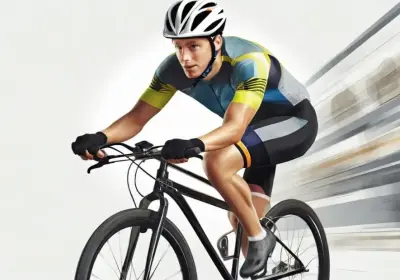

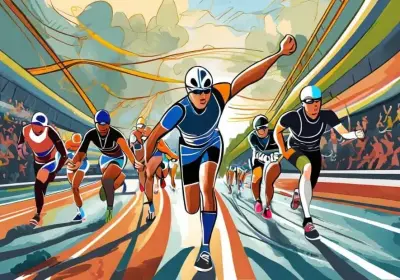




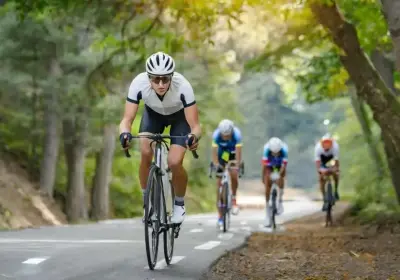


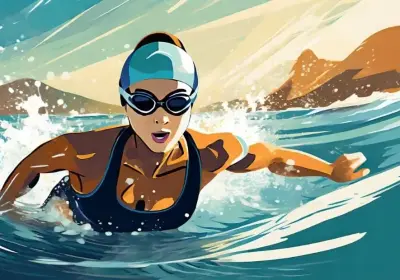
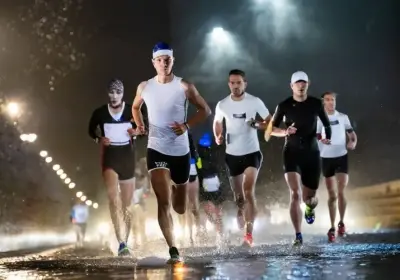
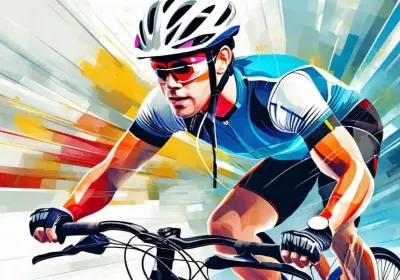
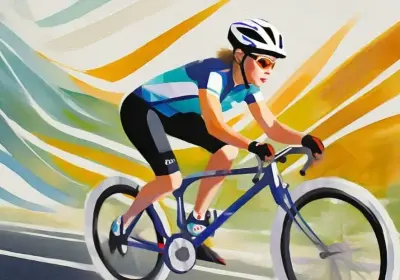
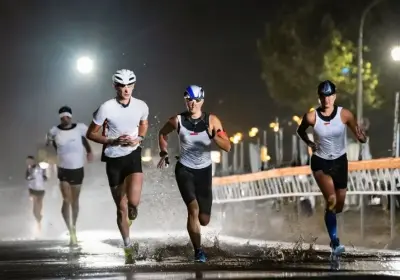

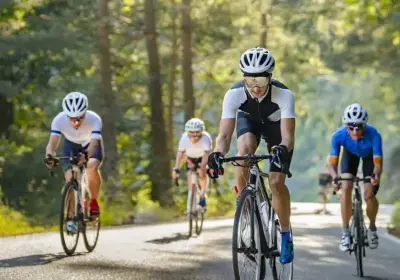


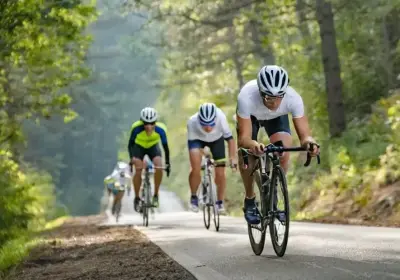

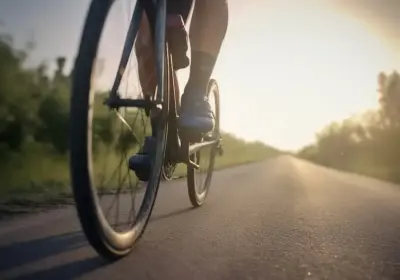
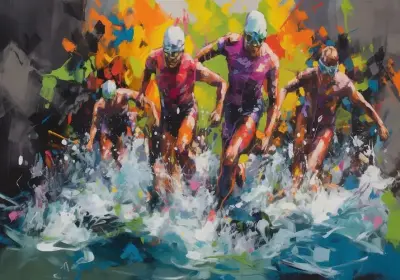

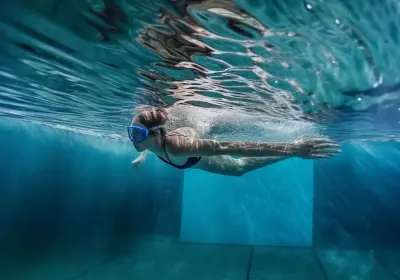
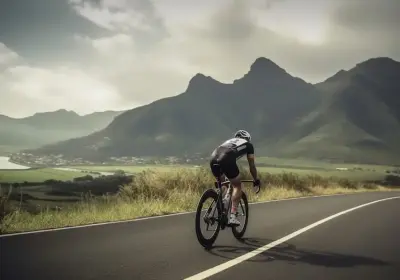
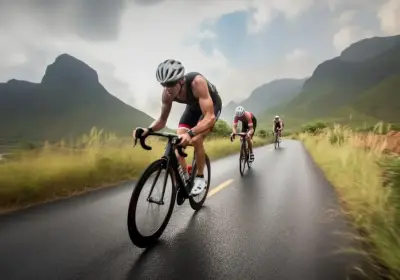








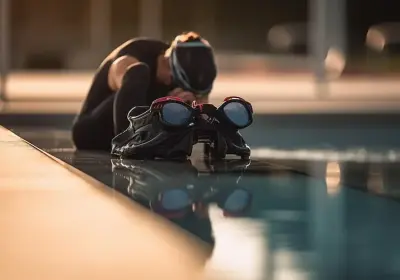
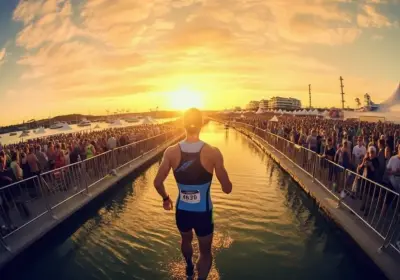

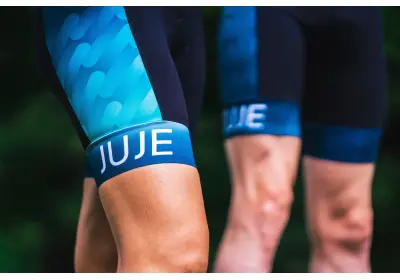

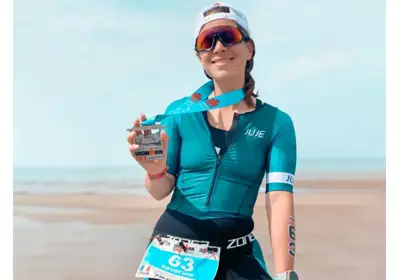


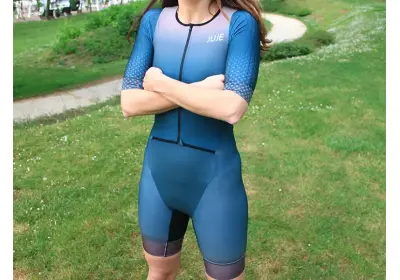

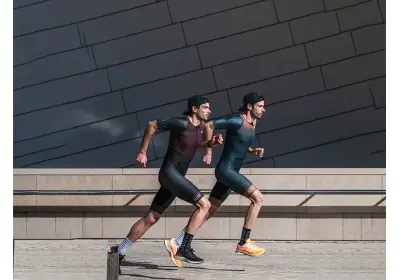
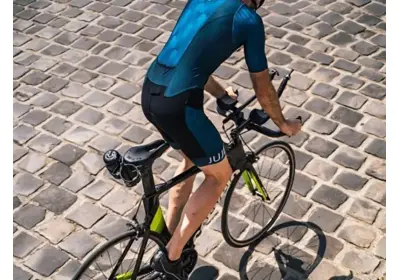
Leave a comment